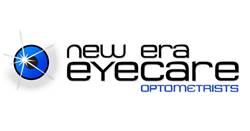Presbyopia Diagnosis and Treatment

What is Presbyopia?
Your eyes work like an elastic band to focus on the images in front of you. When looking at an object in the distance, your eye muscle relaxes. In contrast, it constricts when looking at something nearby. As we age, however, our eye lens becomes less flexible. This makes near objects appear blurry.
To avoid eyestrain, people with untreated presbyopia tend to hold books, magazines, newspapers, and menus at arm's length in order to focus properly. For these people, performing tasks at close range can sometimes cause headaches, eye strain or even fatigue.
Presbyopia is an entirely natural part of aging. At New Era Eyecare, we treat presbyopia and make sure you see clearly again with the right vision correction.
Symptoms and Signs of Presbyopia
Presbyopia is characterized by:
- Difficulty seeing fine print
- Blurred near vision
- Experiencing eyestrain, fatigue or headaches when doing close work or reading
- Needing to hold reading material or small objects at a distance to focus properly
- Requiring brighter lighting when focusing on near objects
If you experience any of these symptoms, make sure to visit our doctors for a comprehensive eye exam.


Treatment for Presbyopia
There are a number of options available for treating presbyopia. These include corrective eyewear, contact lenses, surgery.
Eyeglasses
Reading glasses or “readers” are magnifying glasses worn when reading or doing close work that allows you focus on close objects.
Eyeglasses with bifocal or multifocal lenses, such as progressive addition lenses or PALs are a common solution for those with presbyopia that also have a refractive error, such as farsightedness or astigmatism. Bifocals are made of lenses that include two lens prescriptions; one area (usually the upper portion) for distance vision and the second area for near vision. Progressive addition lenses or PALs similarly provide lens power for both near and distance vision but rather than being divided into two hemispheres, they are made with a gradual transition of lens powers for viewing at different distances. Many individuals prefer PALs, since, unlike bifocals, they do not have a visible division line along the lens.
Bifocal and Multifocal Contact Lenses
Prefer contact lenses? Bifocal and multifocal lenses are equally available in both soft and rigid gas permeable (RGP) contact lenses.
Another option for those who prefer contact lenses is monovision. Monovision splits your distance and near vision between your eyes, using your dominant eye for distance vision and your non-dominant eye for near vision.
Typically, you use single vision lenses in each eye. At times, the dominant eye will use a single vision lens while a multifocal lens will be used in the other eye for intermediate and near vision. This is called modified monovision. Your eye doctor will perform a test to determine which type of lens is best suited for each eye and optimal vision.


Surgery
Surgical procedures are equally available for presbyopia. These include monovision LASIK eye surgery, conductive keratoplasty (CK), corneal inlays, or a refractive lens exchange (RLE) to replace the hardened lens with an intraocular lens (IOL) similar to cataract surgery.
Since it affects so much of the older population, much research and development is going into creating more and better options for presbyopes. Speak to your eye doctor about which option is optimal for your needs.
